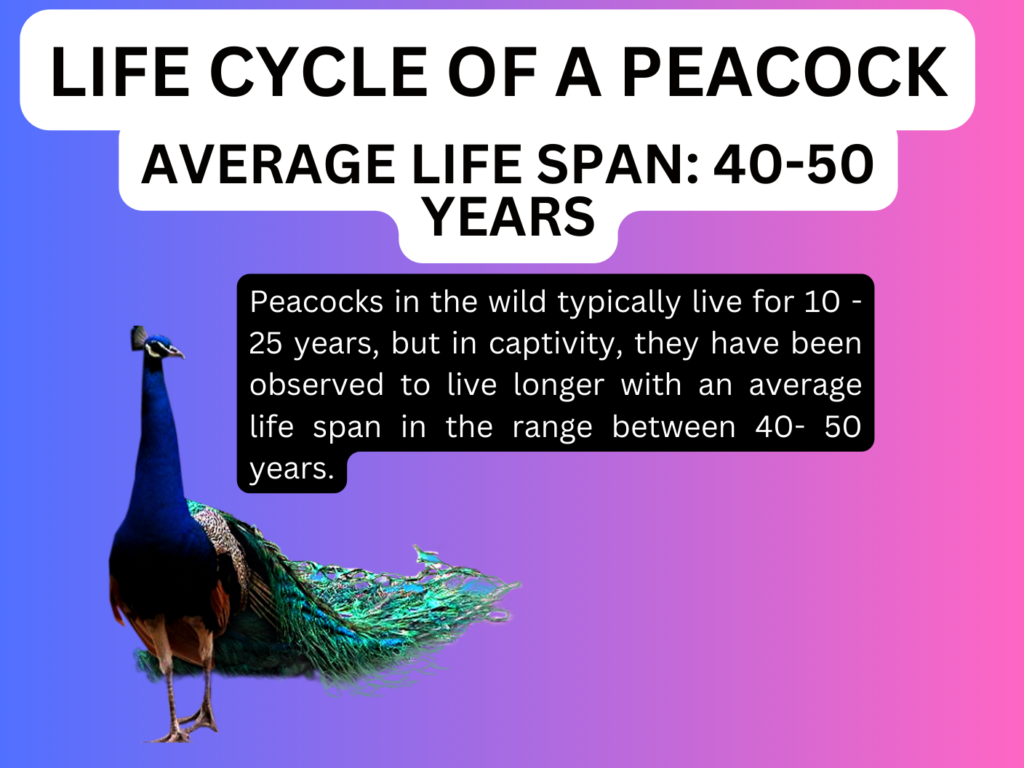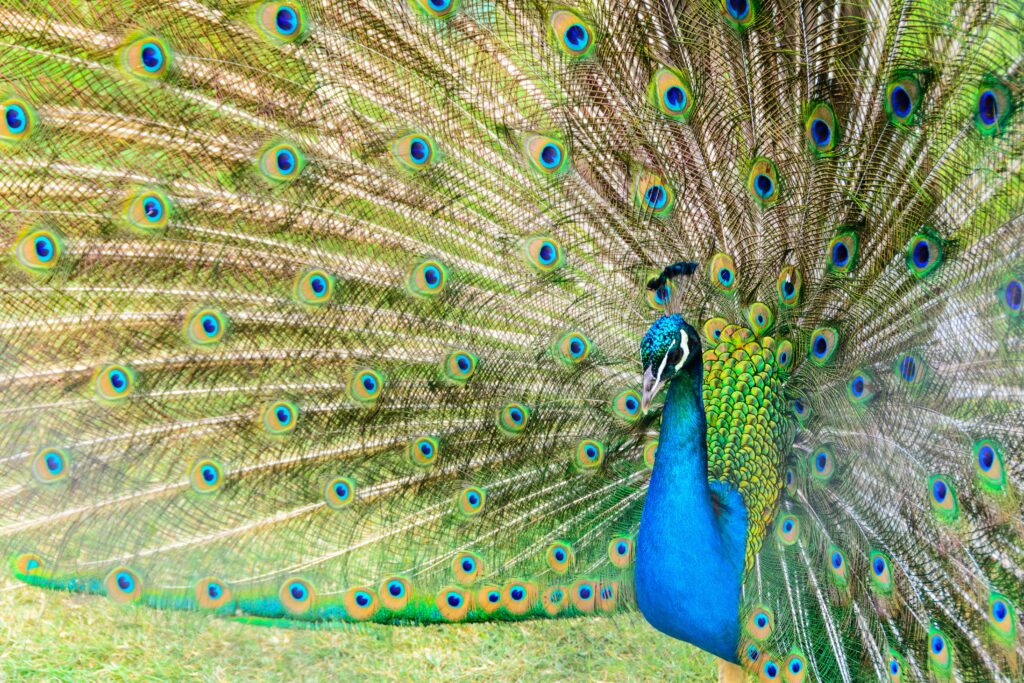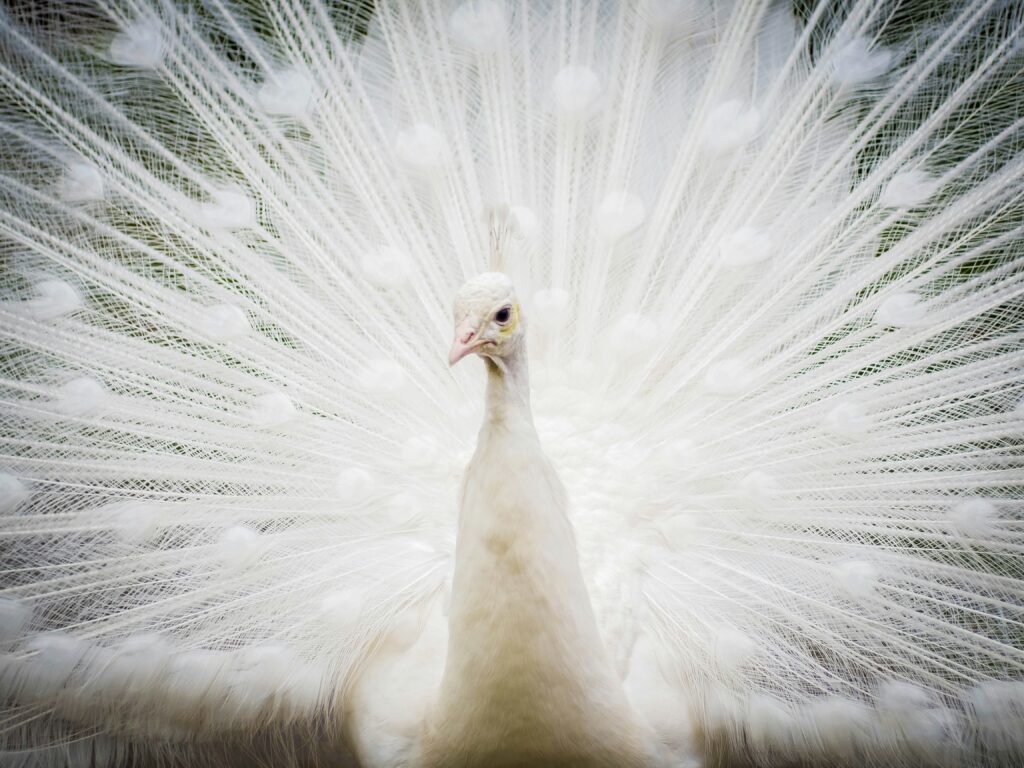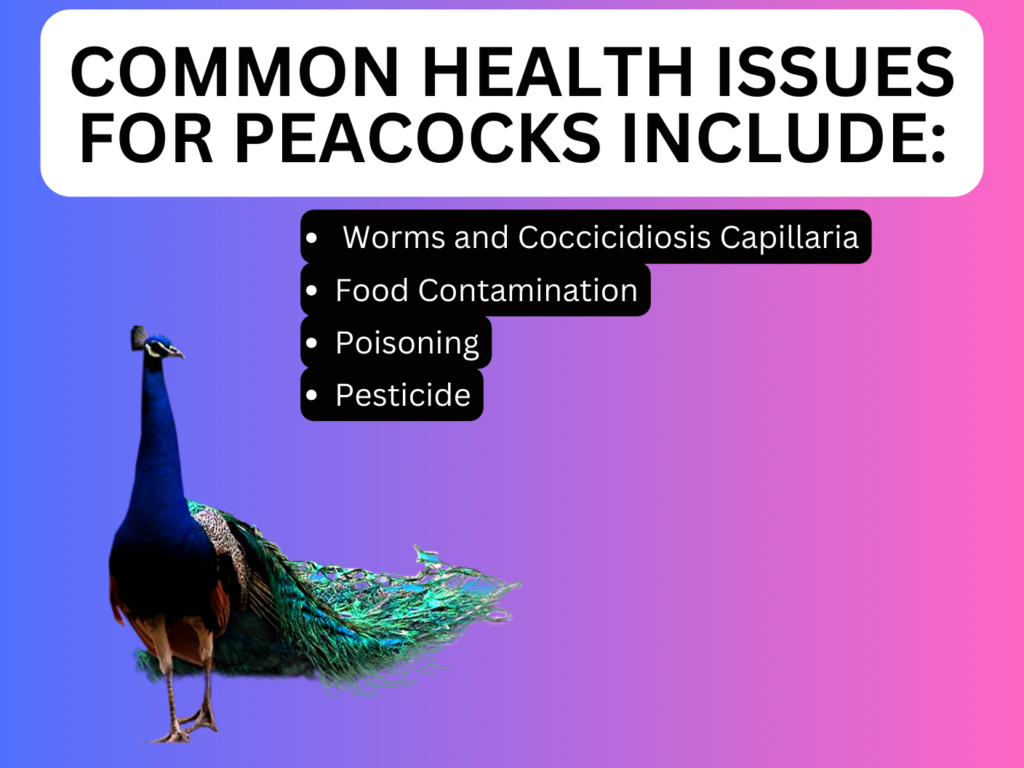
Is there an animal more recognizable than the peacock? Just hearing the word conjures up images of its exquisite plumage, adorned with exquisite patterns. However, beyond its stunning appearance, what knowledge do we possess about this enigmatic bird?
Are you prepared to learn more about this incredible animal? We have the lowdown on what makes this unique bird, including information on the Life cycle of a peacock and what happens to them from birth to maturity.
A Brief Overview of Peacocks
Peafowls are members of the pheasant family which includes peacocks and peahens. Even though all peacocks are referred to as “peacocks,” this phrase only refers to the males of the species. Indian, or blue, peafowls and green peafowls are the two species of peafowls.
Several zoos and parks house Indian peafowls, which are well-known to most people. Native to South Asia, the Indian peafowl is found in both India and Sri Lanka. The green peafowl, often referred to as the Indonesian peafowl, is a species of peafowl indigenous to Southeast Asian tropical woods.
It might also surprise you to learn that the peahens are a drab brown hue, while the males of the species display their beautiful plumage.
To attract females during their mating rituals, peacocks have this exquisite plumage. Peahens evaluate the surrounding males’ fitness levels through this visual display. Peahens would then utilize the quality of these feathers as a factor for choosing possible mates.

Now that we have all this information on peacocks, let’s take a look at peacocks life span:
Life Cycle of a Peacock
Peacocks live 10 to 25 years on average when left in the wild. Peacocks kept in captivity have been seen to have longer lives, with an average age of 40–50 years. The lifespans of the peahen and the peacock are rather comparable, even though they differ greatly.
In comparison to other poultry, peacocks have a pretty long lifespan.
Look at a few instances for comparison:
- Chickens: They have a 3 – 7 years lifespan in the wild. They have, nonetheless, been known to live far longer in captivity. In general, they have a lifespan of 10 to 12 years.
- Turkeys: The typical lifespan of a turkey in the wild is 3 – 5 years. They can outlast their wild counterparts when kept in captivity. The lifespan of a captive turkey is 10 years.
- Ducks: Mallards may live up to 20 years in captivity, while they can only survive 5–10 years in the wild.

The Average Peacock Life Cycle
The amazing show of mating between the males and females makes the life cycle of the peacock fascinating. Their life cycle may be divided into the following stages: mating, eggs, hatchlings, chicks, and adults.
Mating
The peacock’s most common courtship ritual is showcasing its train. Males strut back and forth while spreading their tails into a fan shape and rattling their feathers. The peahen is free to select the man that she prefers once this attracts her interest. A female’s selection of a mate may depend on the quantity and caliber of her feather display. Male peacocks will create a harem of several females if they can find them.
Eggs
The peahen will lay three to six eggs in her clutch after mating. For around 29 days, she will incubate them on her own without help from the male.
Hatchling
Although the small hatchling is born without feathers, it is immediately able to feed and swallow. Birds do not nurse their young; all chicks need to be ready to eat at once. As hatchlings, peachicks, like adults, scrape and peck for small pieces of feed on the ground. They may also eat grasses and small insects.
Peachicks
Peachicks are dependent on their moms for warmth during the first several weeks before they grow feathers. Once they are no longer dependent on their mother for warmth, they join the flock into which they were born and get no more care from a particular family within the larger group.
Peahens and Peacocks
Peacocks reach nearly full maturity in a year. Two-year-olds are similar to adult males, but they don’t have the characteristic eyes on their tails as the older ones have. They start having sex when they are three years old. Peahens can breed as early as one year old and mature more quickly than peacocks. Some decide to wait until the next year.
Factors That Impact The Peacock Lifespan
There isn’t much defensive ability in peacocks. Despite having keen claws and beaks, they are nearly always defeated by larger animals. They are vulnerable to different hazards that shorten their lifespan since they are essentially helpless.

The following are some elements that shorten the peacock’s lifespan:
- Habitat Loss: The green peafowl is not as endangered as the Indian peacock, which is listed as least concern. Since 2009, it has been listed as endangered on the IUCN Red List because of the rapid decline and great fragmentation of the global population caused by habitat destruction. These birds adore living in the rainforest. They need areas where they may conceal themselves from large predators and trees to sleep in. The number of woodland areas being destroyed by humans is increasing as they spread and grow.
- Predation: In the wild, peacocks have several natural adversaries. Several animals have been observed to prey on peacocks in the wild, including raccoons, wild dogs and cats, tigers and leopards, and mongooses.
- Hunting: Illegal peacock hunting has increased in nations like India as a result of the peacock feather trade. India banned peacock hunting to keep the peacock population from declining further.
Conclusion
In conclusion, the life cycle of a peacock is a captivating journey marked by intricate courtship rituals, dedicated parenting, and gradual maturation. From the dazzling displays of the males to the nurturing care of the peahens, each stage of their life cycle unveils the beauty and resilience of these majestic birds. Despite facing threats like habitat loss, predation, and illegal hunting, peacocks continue to enchant and inspire awe with their stunning plumage and fascinating behaviors. Understanding their life cycle not only deepens our appreciation for these creatures but also underscores the importance of conservation efforts to ensure their survival for generations to come.
